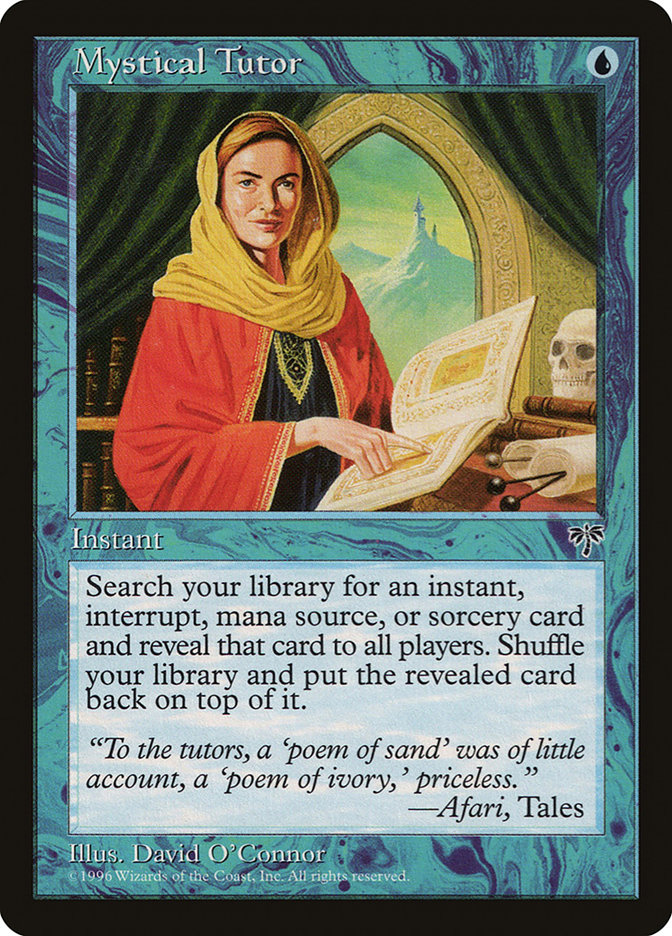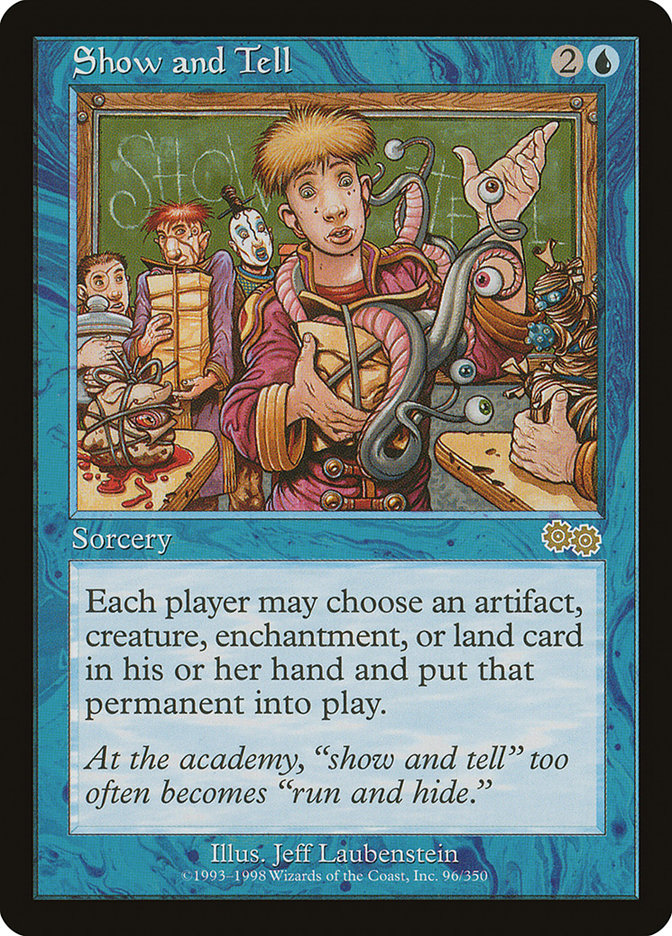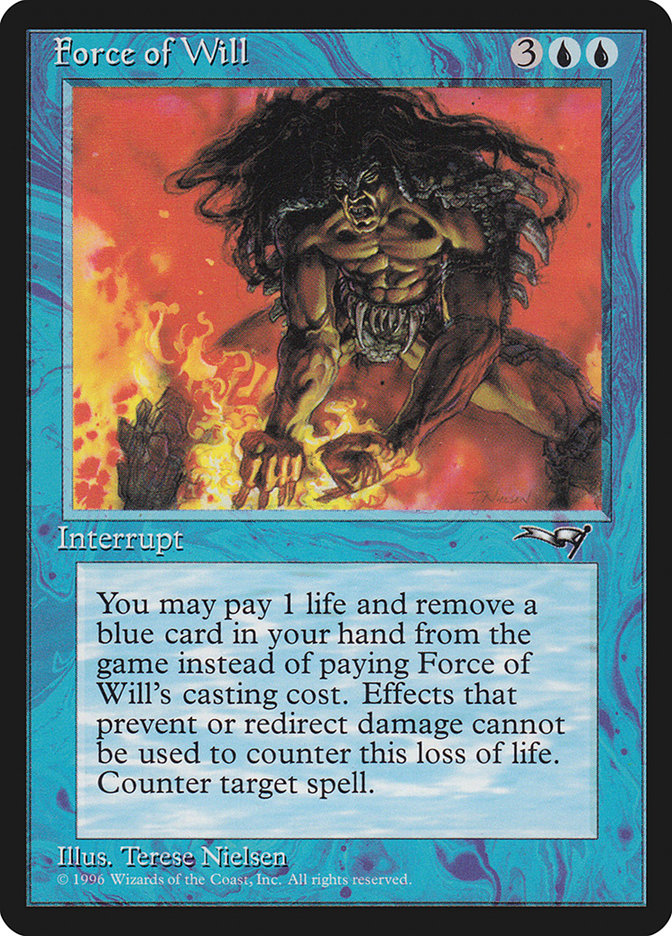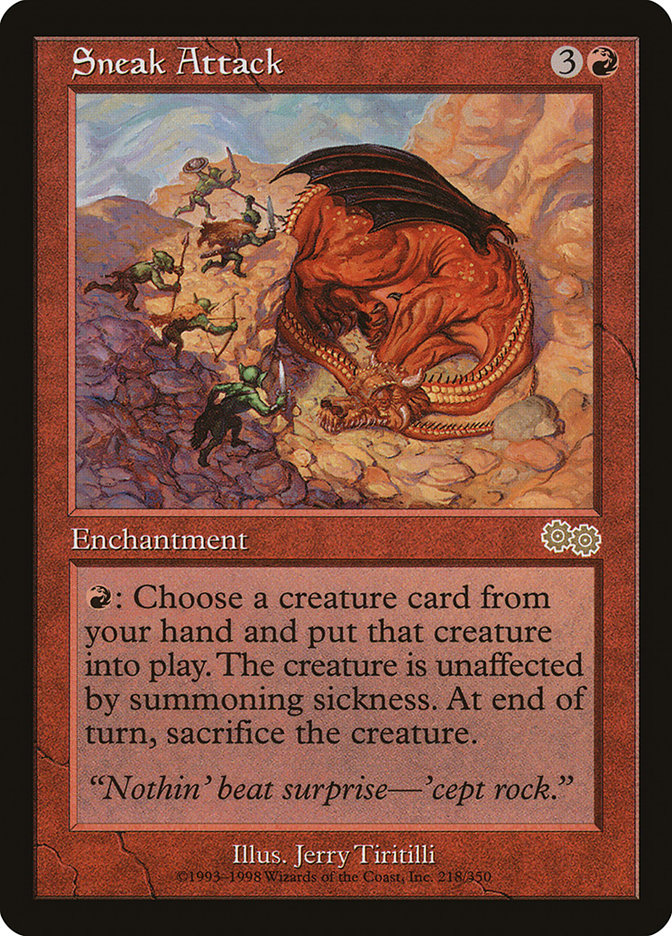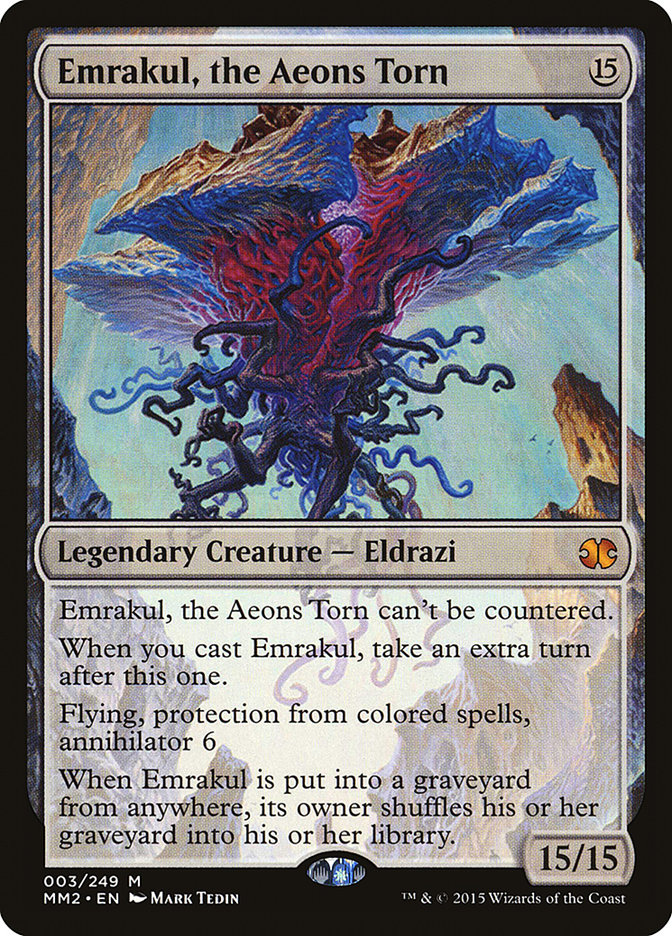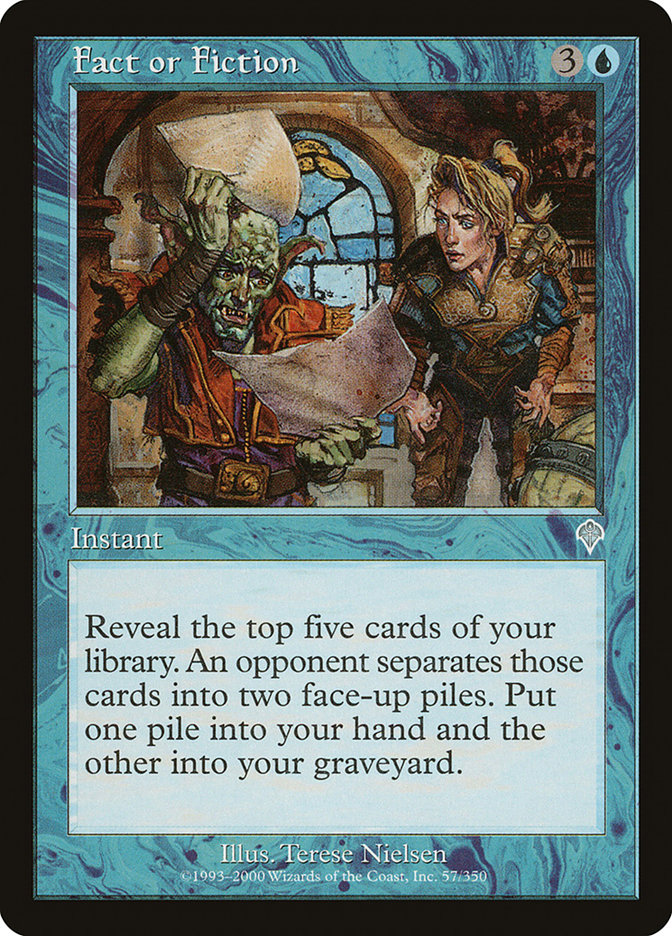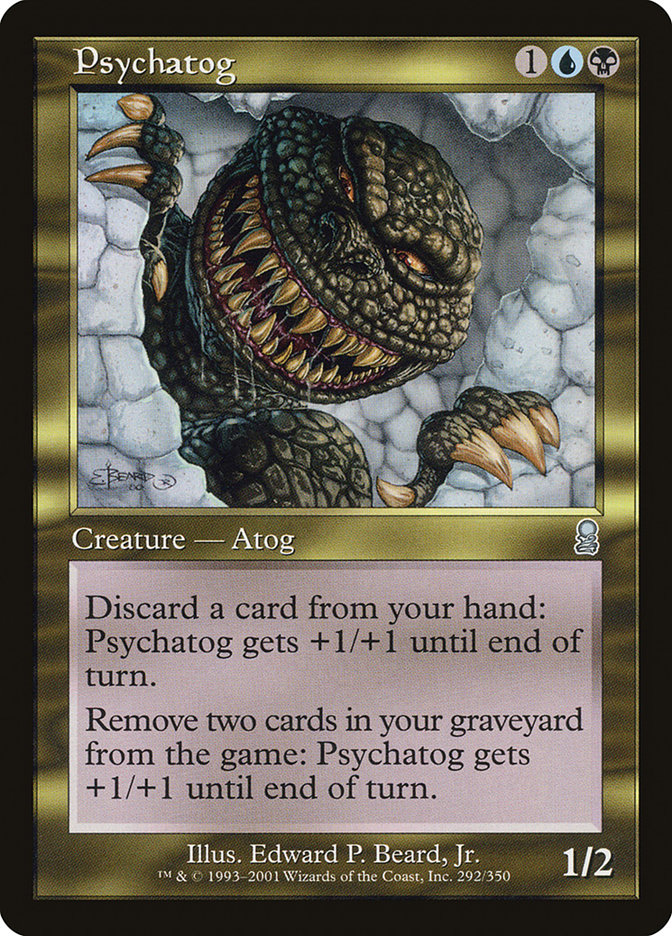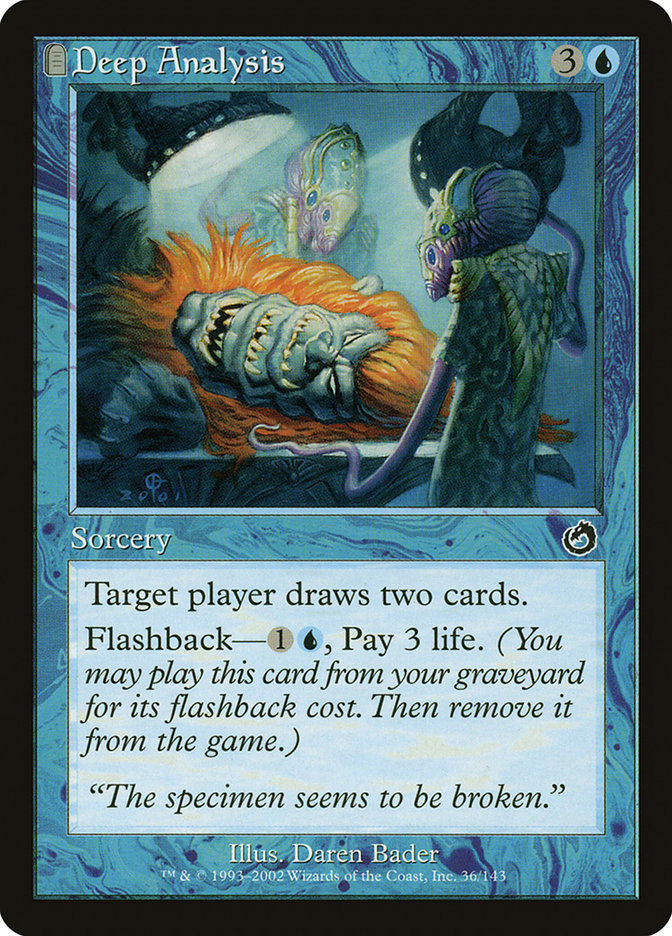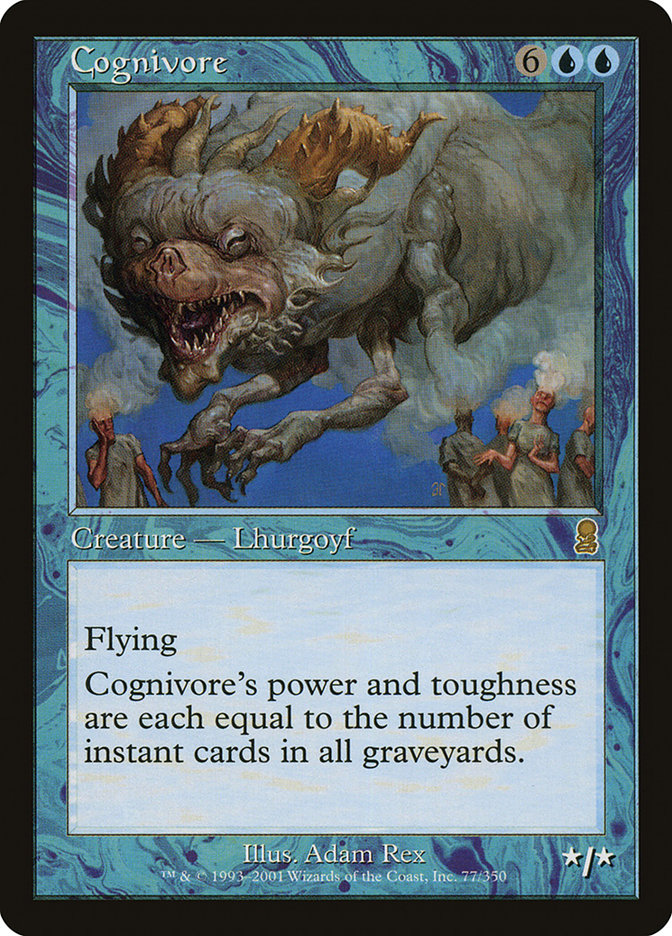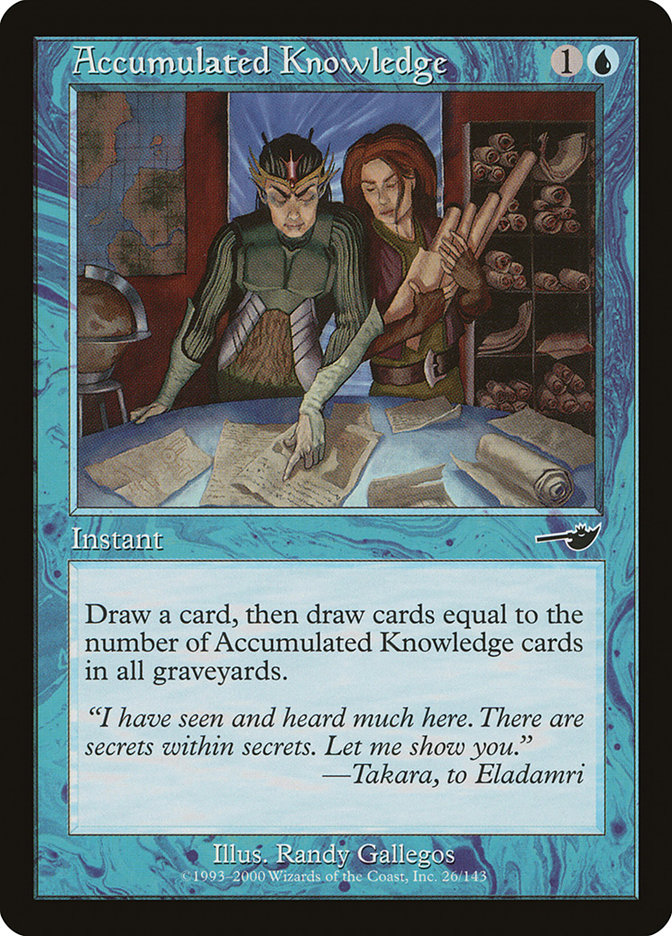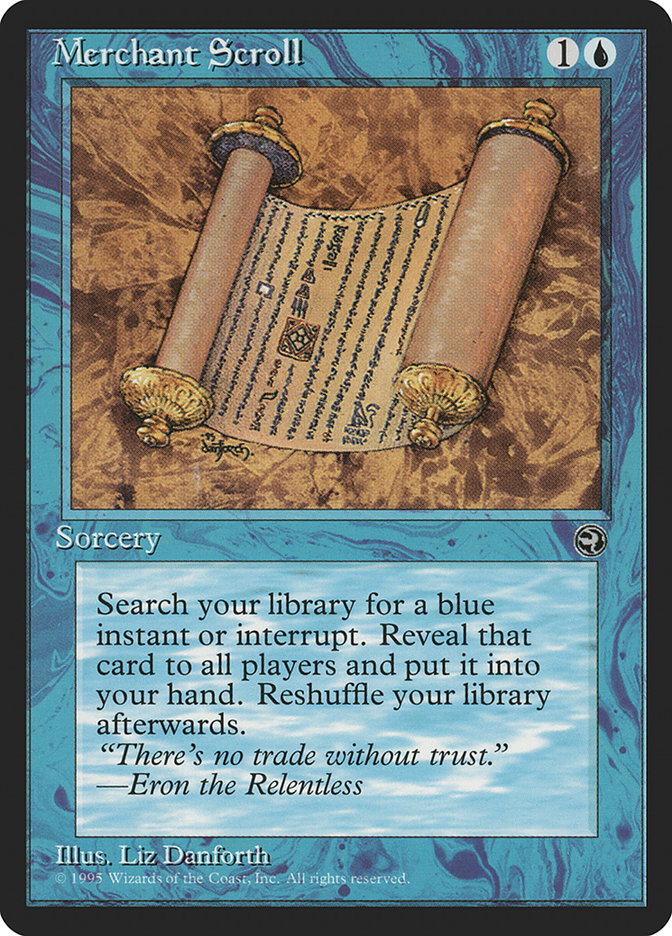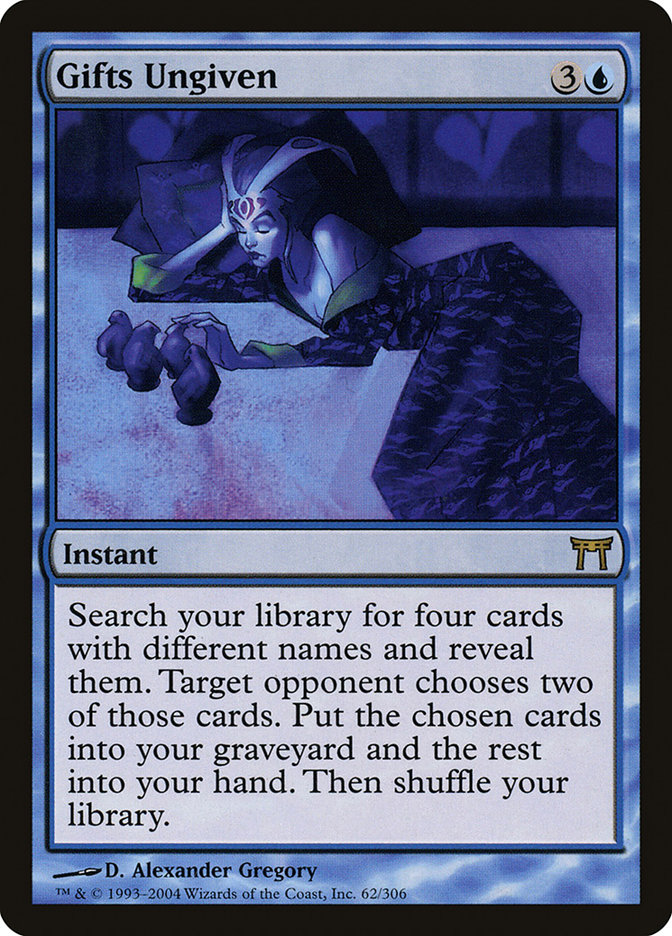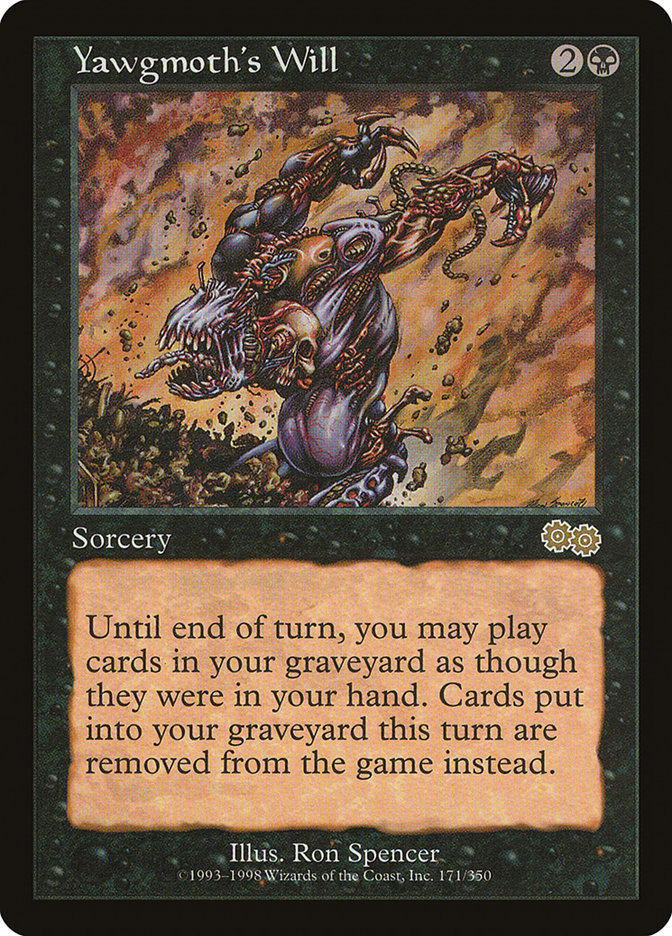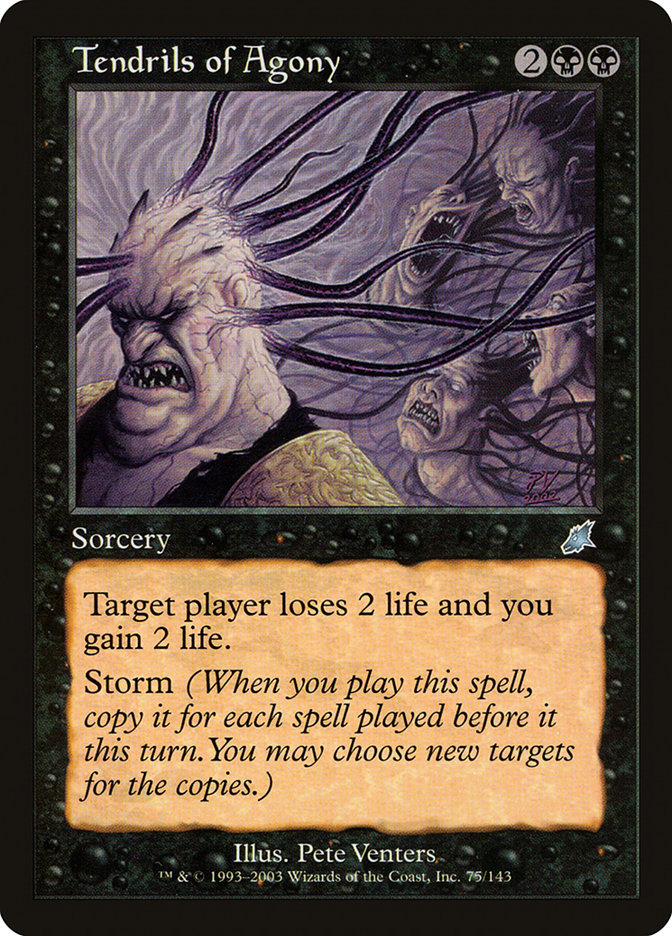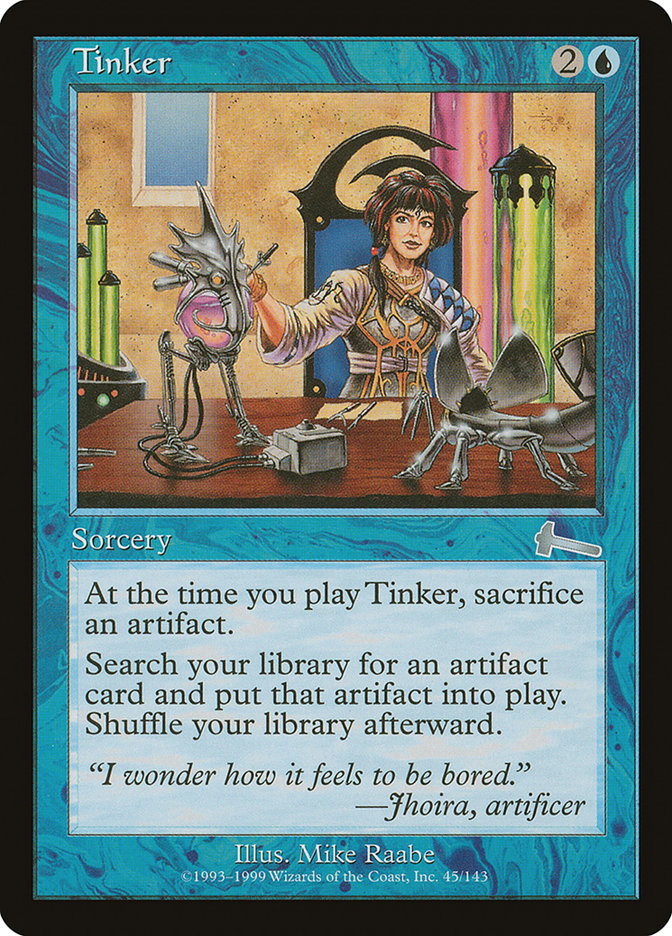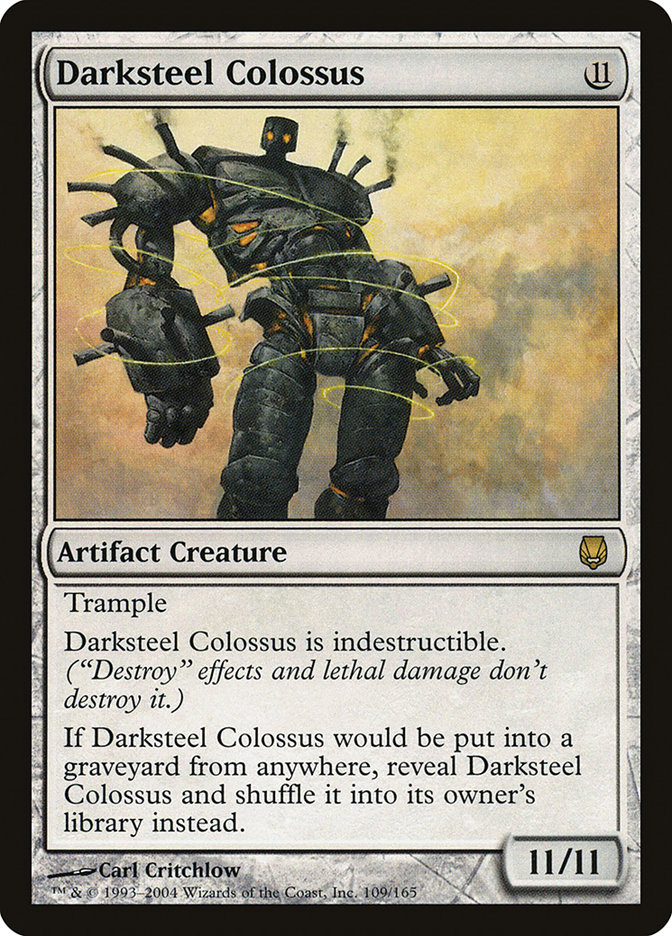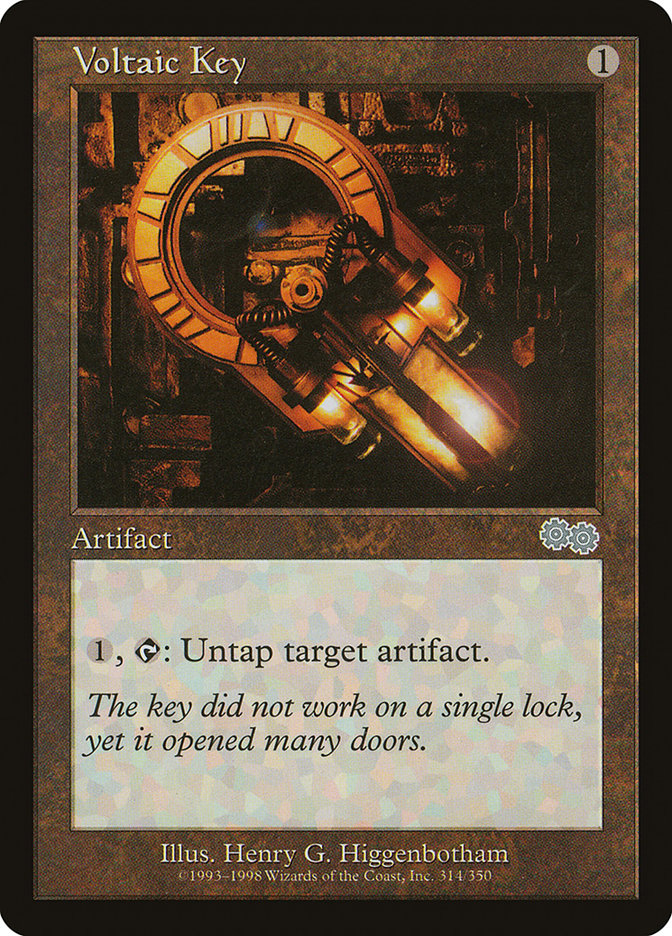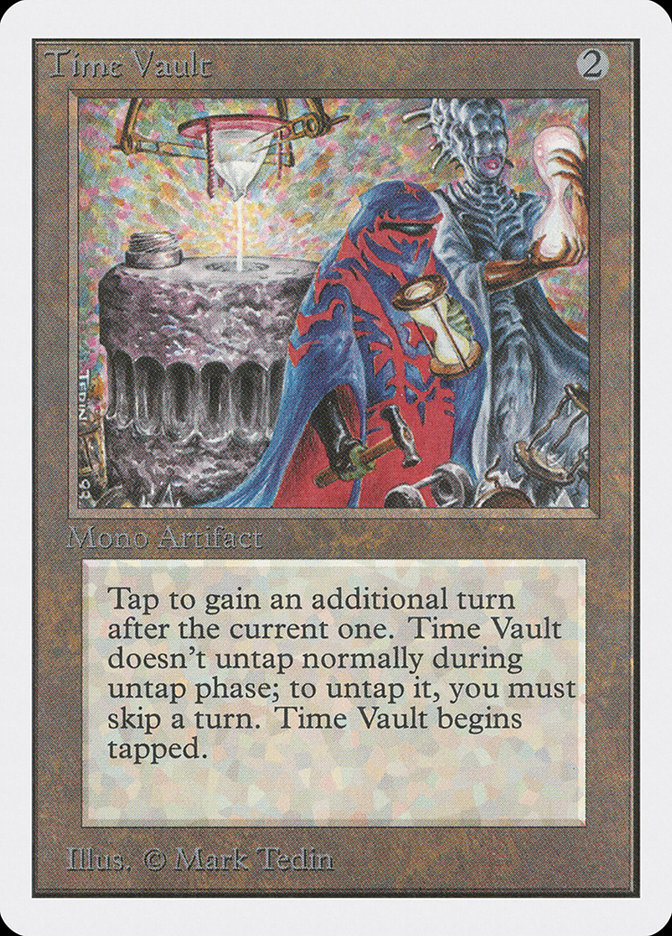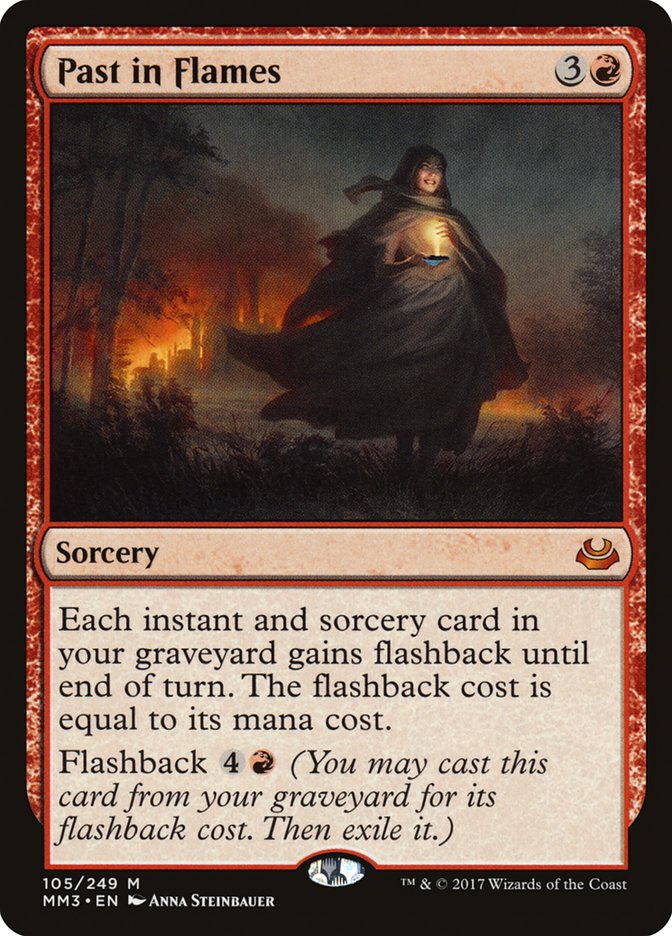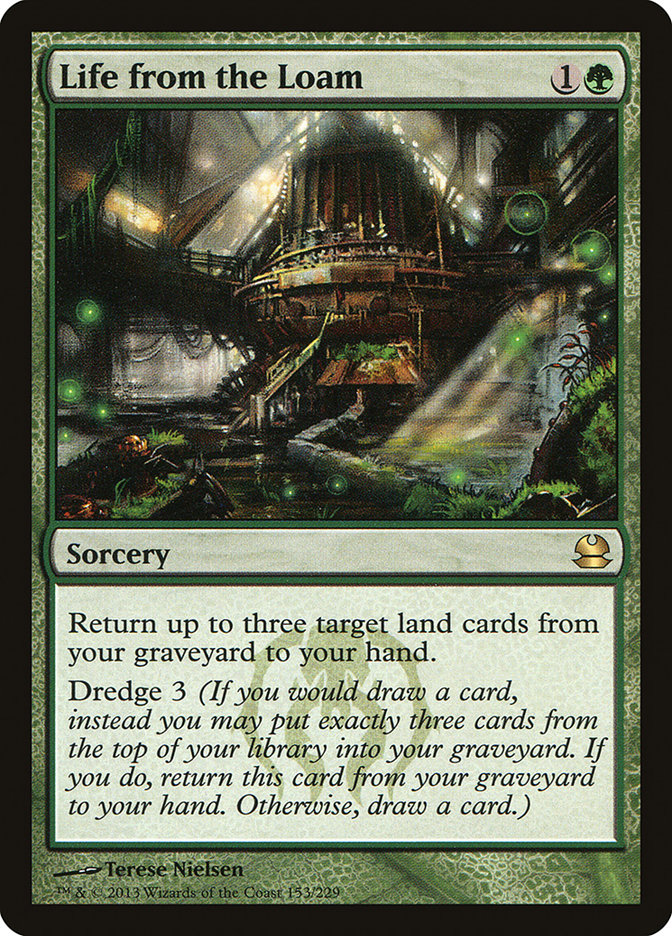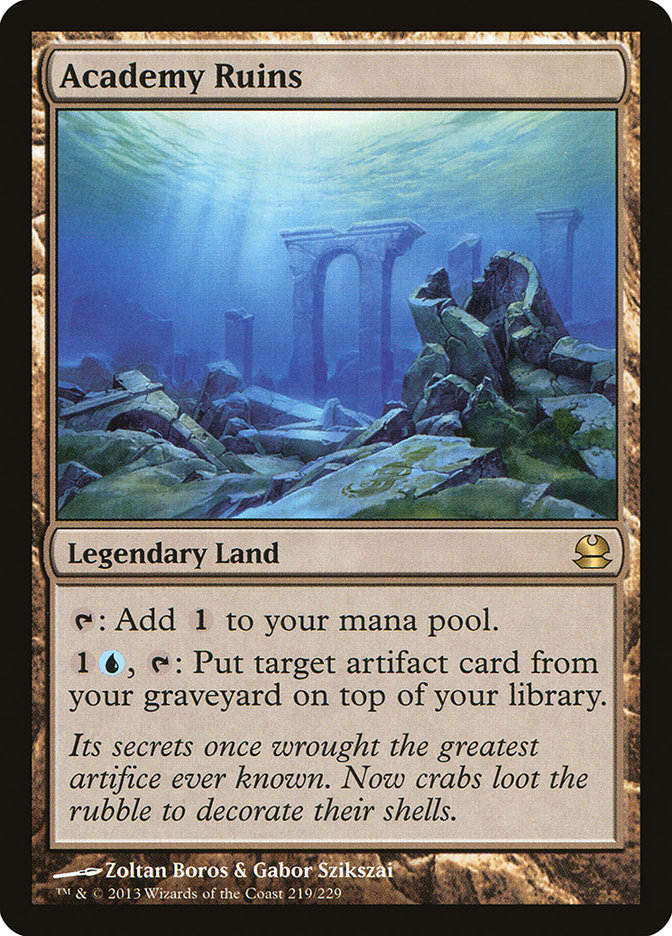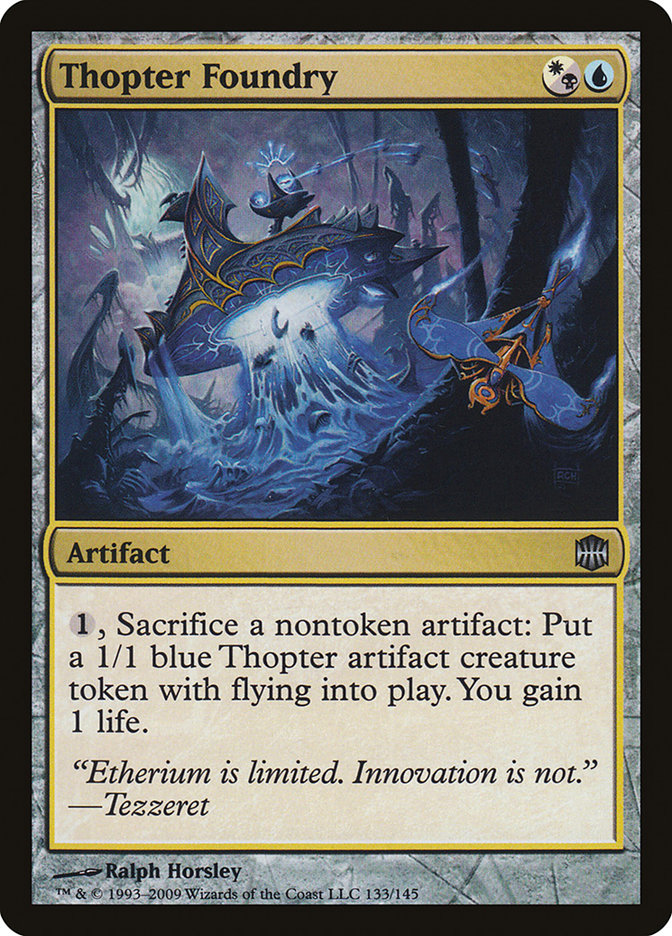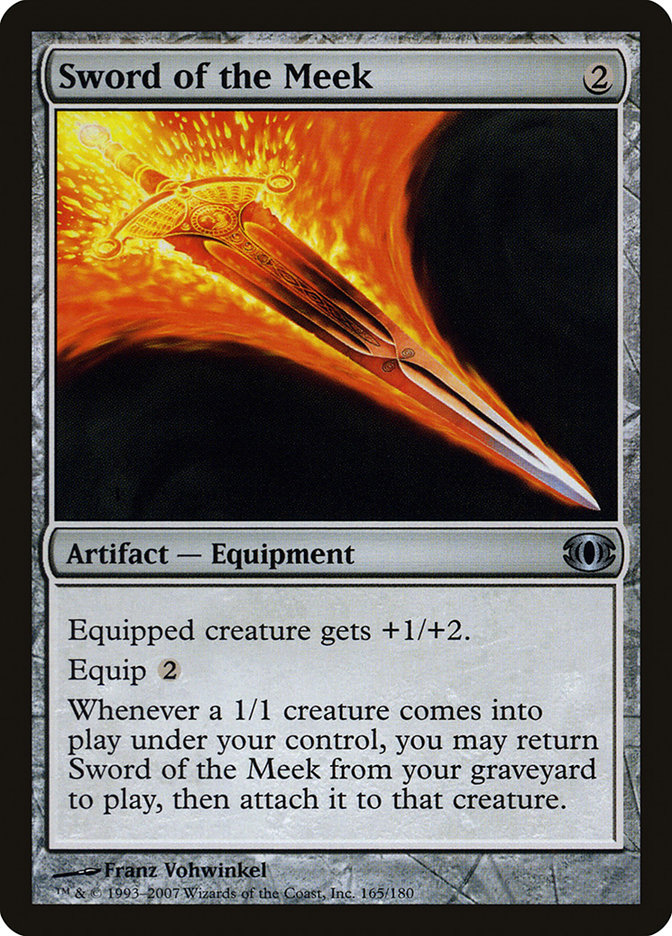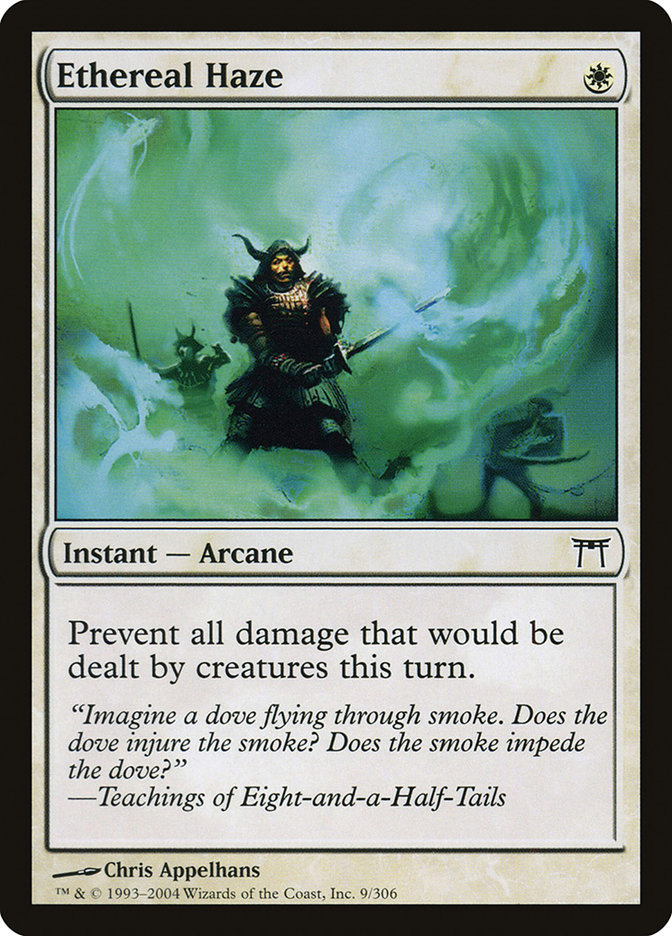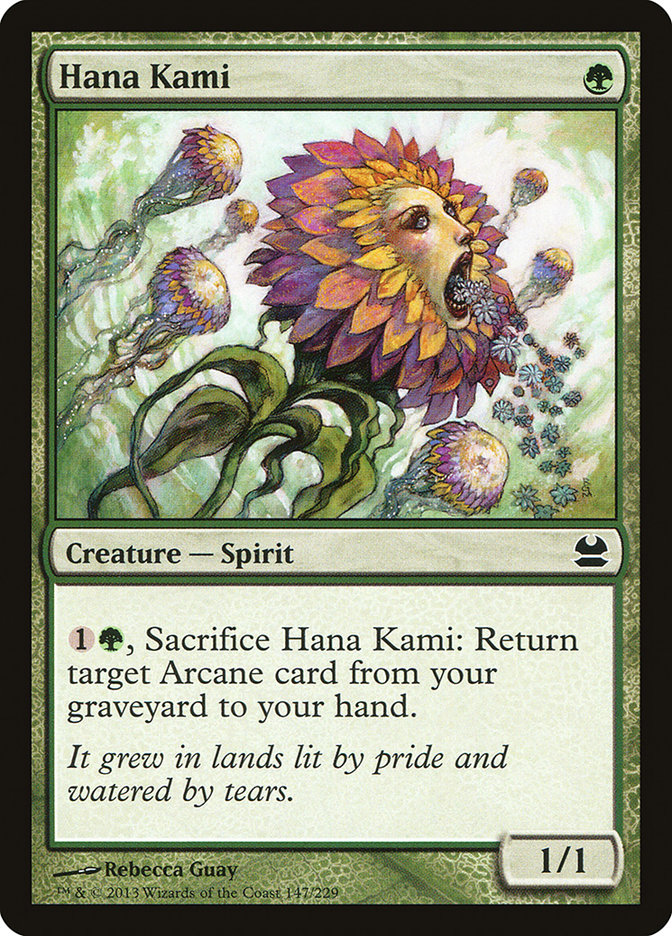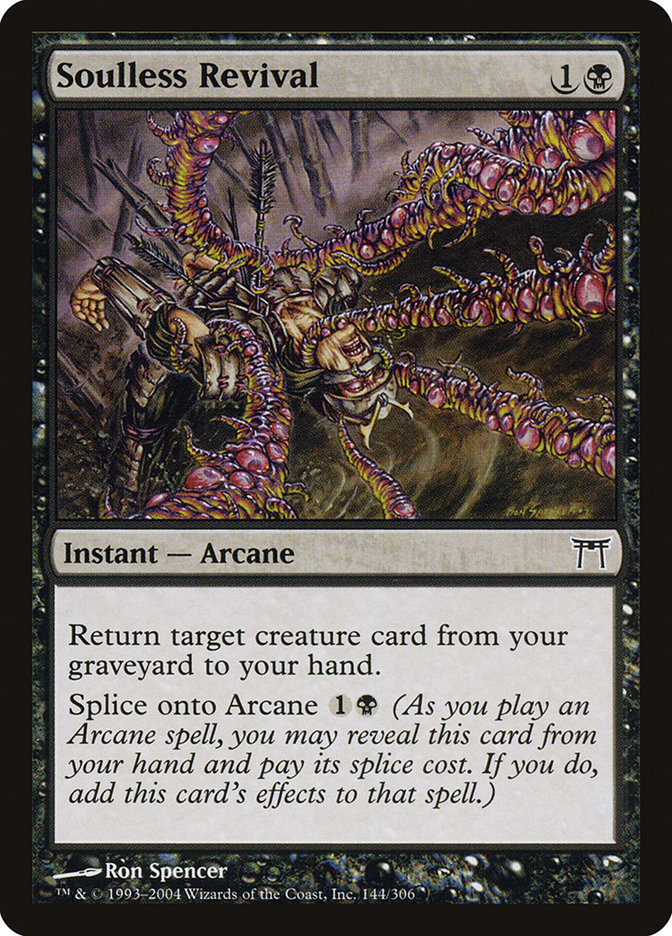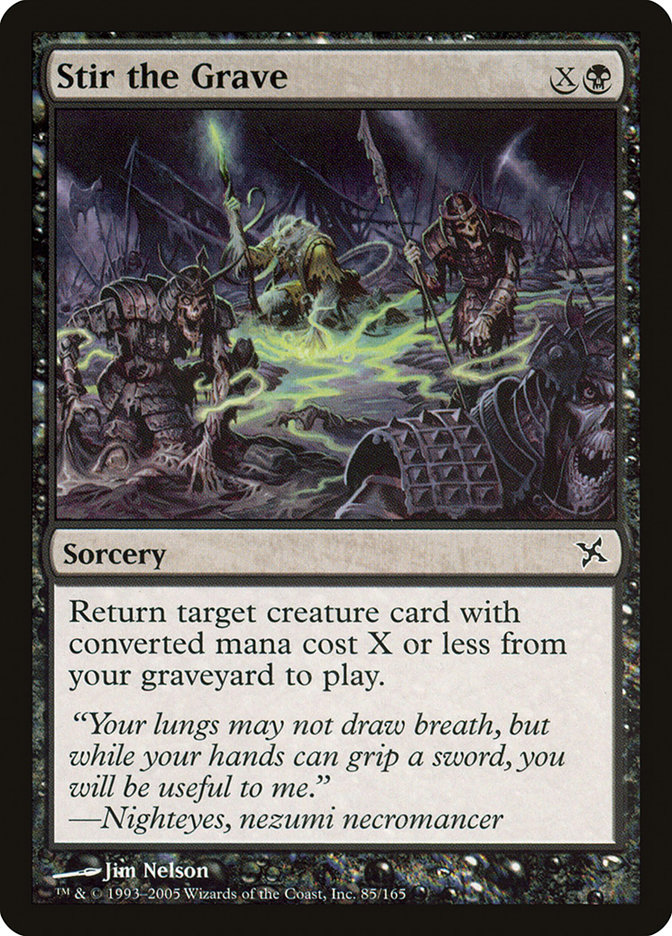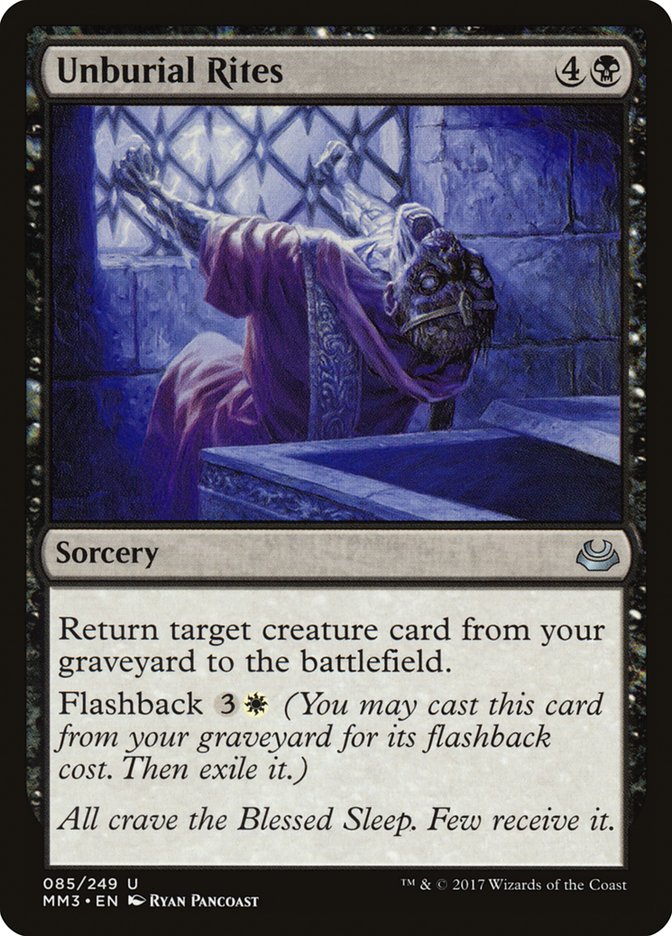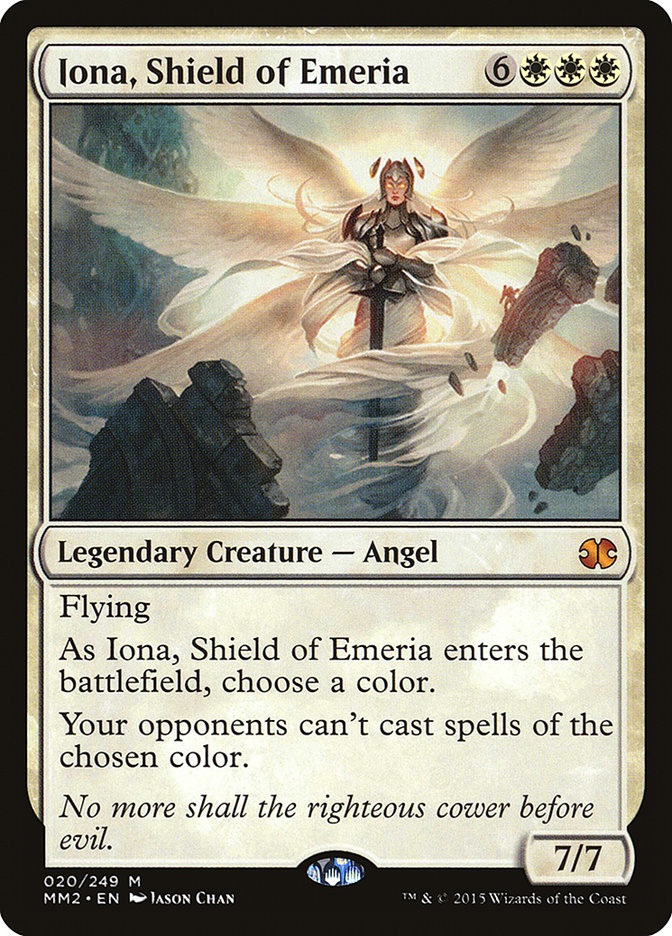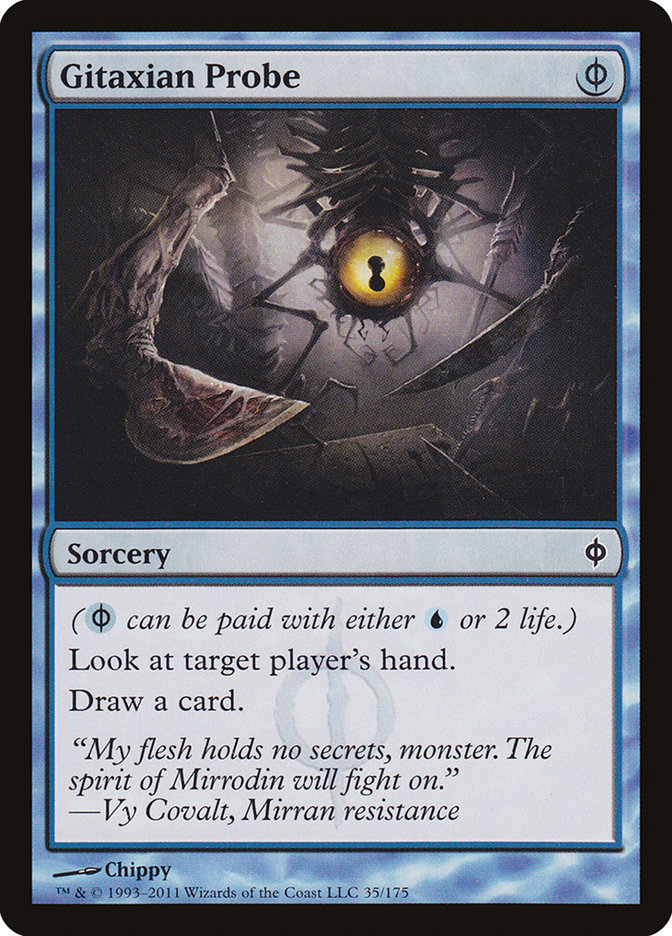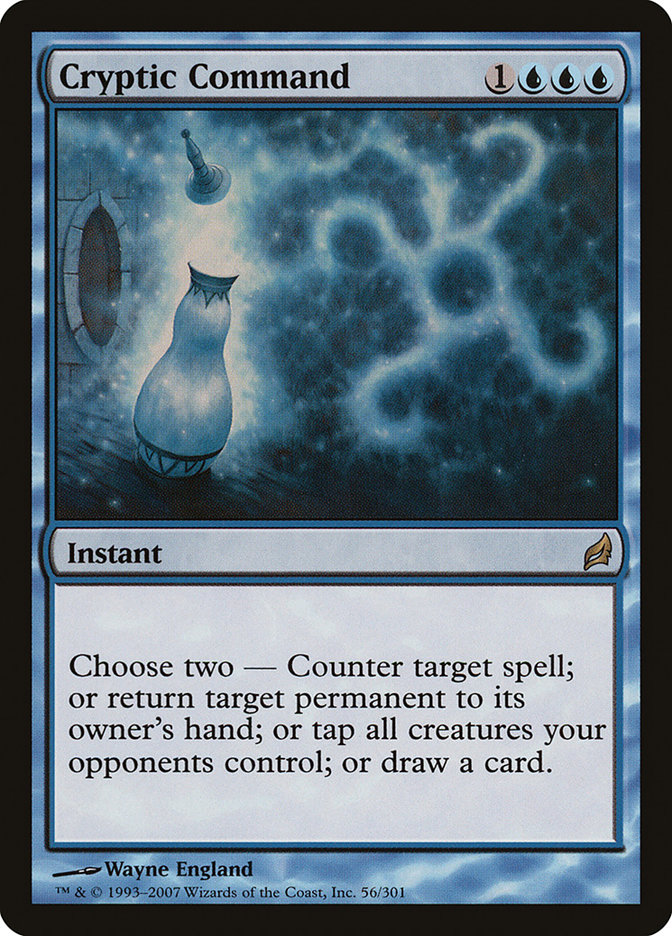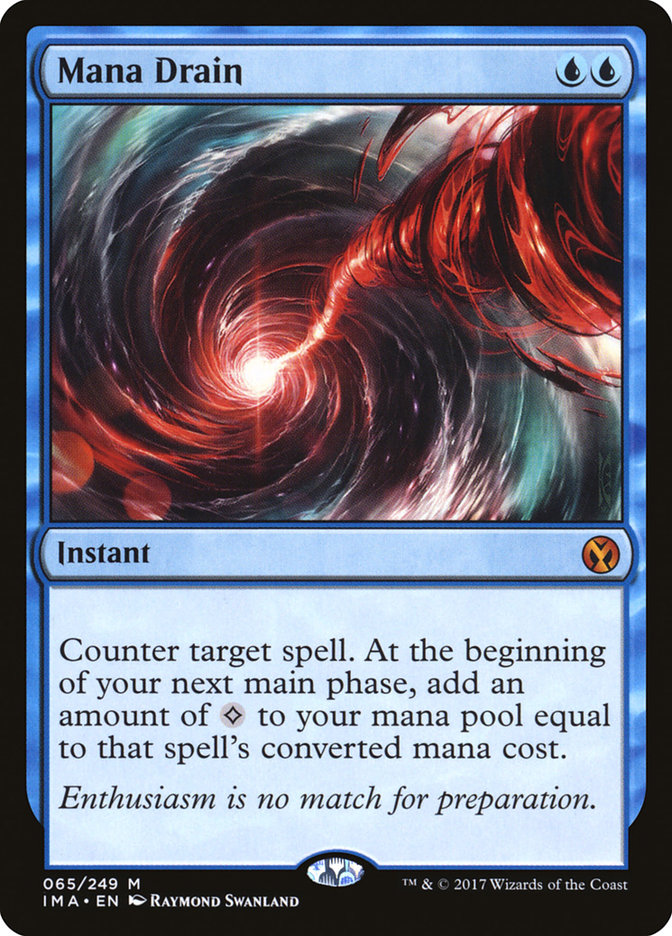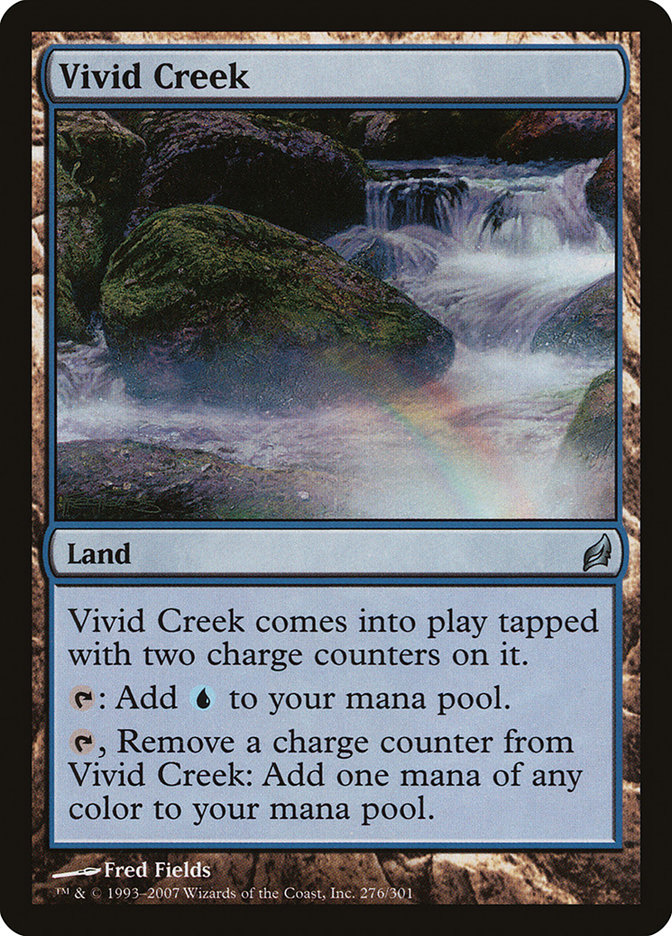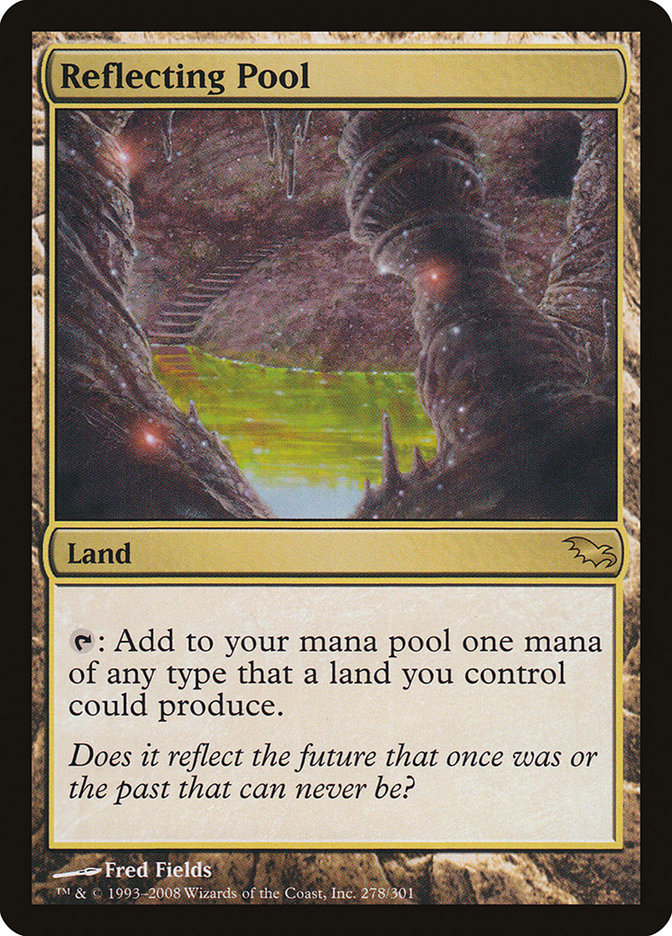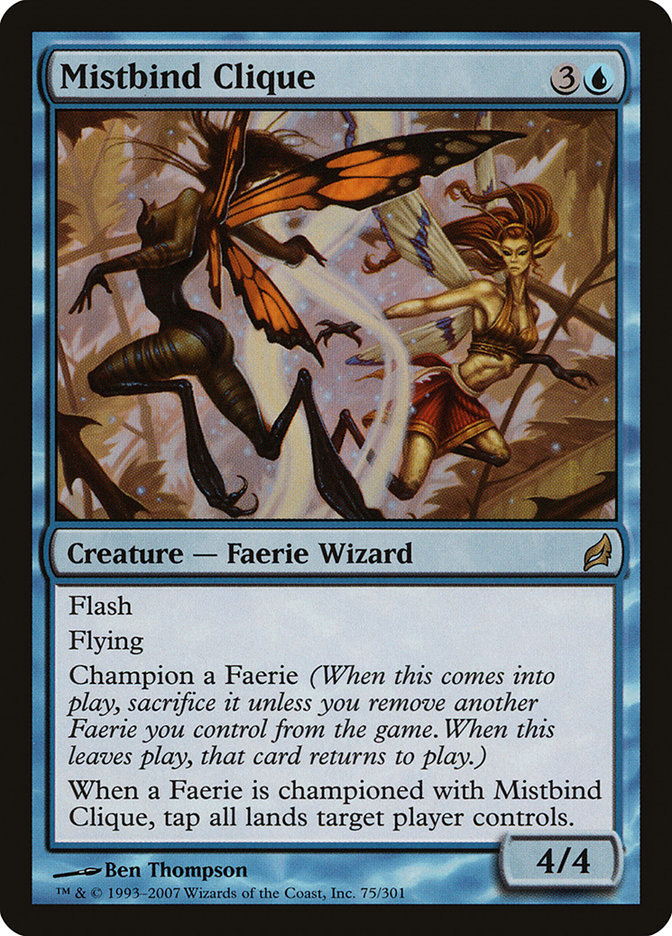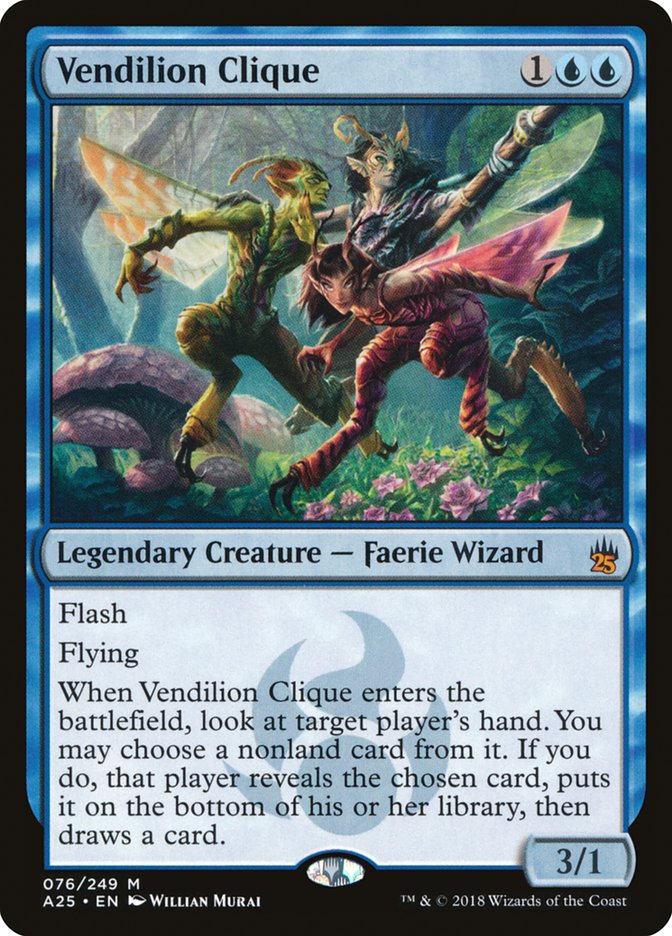This month is a big one for Magic: the Gathering.
25 years ago, Richard Garfield first demoed Magic at Origins, sparking a
revolution in gaming.
Over the past 25 years, tens of thousands of cards have appeared in the
Multiverse, and this month, we’ve been counting down the top 25 cards of
each color. With
Green
,
Red
,
White
, and
Black
in the books, we’ve finally reached the main event.
While Magic has long since reached a relatively reasonable balance between
the colors, we’re not dealing with “balanced” this week.
How many colors even have as many restricted cards as blue has restricted
cards that don’t even make the list?
#25: Show and Tell
Whoa, whoa, whoa. How are you gonna put Show and Tell on the list when
it’s not on any banned or restricted lists?
Neither is Force of Will. What’s your point?
First of all, Show and Tell is busted. It was printed in an era without
particularly good sevens, eights, or nines to cheat onto the battlefield,
and still it was part of no end of degenerate combo decks, such as
the Bargain deck Zvi Mowshowitz used at US Nationals
in 1999.
The card has proven itself a staple for powered formats, perhaps most
famously, alongside another Urza’s Saga card, Sneak Attack.
Sneak Attack only narrowly missed red’s top twenty-five list, and I think
there’s a great argument to be made for it deserving to be higher. When
used alongside Show and Tell, one can really capitalize on the most
powerful threats the game has ever seen, casting cost be damned.
Griselbrand and Emrakul, the Aeon’s Torn are both so much more
powerful than other creatures, they really set the pace for what you can
get with cards that cheat creatures onto the battlefield.
Creatures (8)
Lands (19)
Spells (33)

This is a deck with a boat load of busted fast mana cards and cantrips, but
even without all that stuff, Show and Tell putting Griselbrand or Emrakul
down would be extremely warping for most formats. And even if you were okay
with nothing getting printed as powerful as those two, it’s not like Show
and Tell wouldn’t be busted with countless other things, too.

While Legacy is Show and Tell’s bread and butter, it’s still known to put
in work in Vintage, especially as a complement to Oath of Druids.
Creatures (3)
Planeswalkers (2)
Lands (15)
Spells (40)
- 1 Brainstorm
- 3 Mana Drain
- 3 Show and Tell
- 1 Vampiric Tutor
- 4 Oath of Druids
- 4 Force of Will
- 1 Sol Ring
- 1 Demonic Tutor
- 1 Time Walk
- 1 Ancestral Recall
- 2 Misdirection
- 1 Black Lotus
- 1 Mox Emerald
- 1 Mox Jet
- 1 Mox Pearl
- 1 Mox Ruby
- 1 Mox Sapphire
- 1 Ponder
- 1 Maelstrom Pulse
- 4 Preordain
- 4 Mental Misstep
- 2 Flusterstorm
Sideboard

#24: Fact or Fiction
After the insanity that was Urza’s Saga block, WotC pulled way back on card draw and fast mana. While there were definitely
some Masques block cards over the line, Fact or Fiction
was the first card draw spell that really warped Standard since Combo
Winter.
While Fact or Fiction enjoyed great success in a variety of archetypes, it
was the eventual printing of Psychatog that really broke the card open.
Creatures (8)
Lands (24)
Spells (28)
- 4 Counterspell
- 3 Chainer's Edict
- 3 Memory Lapse
- 2 Upheaval
- 3 Circular Logic
- 3 Cunning Wish
- 4 Repulse
- 3 Fact or Fiction
- 3 Deep Analysis
Sideboard

Psychatog’s ability to convert all those extra cards in the graveyard into
a powerful advantage was the perfect way to push an already pushy card
advantage machine into a killing one.
Deep Analysis definitely deserves an honorable mention, and while it has
occasionally outperformed even Fact or Fiction, there’s no question which
of them has come out on top more times historically.
Psychatog is hardly the only creature to have benefited from just how much
Fact or Fiction fuels the graveyard. Even stuff as weird and janky as
Cognivore has extra meaning when used with Fact or Fiction.
Creatures (2)
Lands (24)
Spells (34)
- 4 Brainstorm
- 4 Counterspell
- 4 Oath of Druids
- 4 Accumulated Knowledge
- 1 Mana Leak
- 2 Forbid
- 3 Force Spike
- 2 Intuition
- 1 Foil
- 2 Living Wish
- 3 Pernicious Deed
- 3 Fact or Fiction
- 1 Krosan Reclamation
Sideboard

Now, admittedly, Oath of Druids and its ability to mill your whole deck is
the big draw to Cognivore, but Fact or Fiction is especially nice for
finding Accumulated Knowledge, getting a fresh top of the deck after a
Brainstorm.
Fact or Fiction was, not surprisingly, even a dominating force in Block
Constructed, right from the gate, even without any graveyard synergies.
Just drawing a bunch of cards at instant speed is pretty strong, and there
was even an extended period of time where Fact or Fiction was restricted in
Vintage. Of course, cards being restricted in Vintage doesn’t tell the
whole tale.
Do I think Merchant Scroll is better than Fact or Fiction in Vintage? Yes,
but that’s not the end of the story. Merchant Scroll misses the top 25 list
on account of just not being nearly as busted in formats where Ancestral
Recall isn’t legal (which is almost all of them).
Don’t get me wrong, Merchant Scroll searching up Ancestral Recall is a very
strong play, but it really is the Ancestral Recall doing the heavy lifting
there. Merchant Scroll is legal in Modern and Legacy but sees only
occasional fringe play. Without Ancestral Recall to go find, it’s just not
in the same league as the cards on this list.
After all, what’s even the best thing to get, besides Ancestral Recall?
#23: Gifts Ungiven
When Merchant Scroll was eventually restricted, it was because of its use
in a Gifts Ungiven deck combining three of the best combos in the game,
Yawgmoth’s Will + Tendrils of Agony, Tinker + Darksteel Colossus, and
Voltaic Key + Time Vault.
These days, Blightsteel Colossus would obviously replace Darksteel
Colossus, but the idea still holds true. Gifts Ungiven is an excellent way
to set up a game-winning combination of cards and a great target for your second Merchant Scroll.
These days, Gifts Ungiven is commonly thought of as an enabler for Past in
Flames, but there has been no shortage of combinations made possible by
this “double Demonic Tutor.”
Just as Past in Flames exploits Gifts Ungiven’s “drawback” of putting your
two best cards in your graveyard, so to does Life from the Loam. I’m
definitely a guy that has played more than my fair share of Gifts Ungiven
decks, and one of my favorites used this combination, among many:
Lands (23)
Spells (37)
- 4 Mana Leak
- 3 Gifts Ungiven
- 2 Vedalken Shackles
- 4 Thirst for Knowledge
- 1 Tormod's Crypt
- 1 Chalice of the Void
- 2 Chrome Mox
- 2 Engineered Explosives
- 1 Life from the Loam
- 1 Muddle the Mixture
- 3 Spell Snare
- 1 Spell Burst
- 1 Sword of the Meek
- 2 Cryptic Command
- 1 Firespout
- 1 Bant Charm
- 3 Path to Exile
- 1 Thopter Foundry
- 3 Punishing Fire

Punishing Fire + Grove of the Burnwillows is obviously another excellent
package to put alongside Life from the Loam and any other land (frequently
Academy Ruins or Tolaria West).
Another common strategy with Gifts Ungiven is finding two cards you want
and two cards that can get the card you want back.
Creatures (10)
- 4 Sakura-Tribe Elder
- 2 Ink-Eyes, Servant of Oni
- 1 Meloku the Clouded Mirror
- 2 Kokusho, the Evening Star
- 1 Hana Kami
Lands (24)
Spells (26)

Here, the combination is Ethereal Haze + Hana Kami + Soulless Revival.
Despite being three cards instead of two, Hana Kami can be exchanged with
either of the other two, and you only need two out of the three to get
started (assuming the other one was in your graveyard, which Gifts Ungiven
conveniently arranges).
All you need now is a fourth card that can get one of the other back, and
you’re in business. While Stir the Grave can only hit Hana Kami, among
those others, the Kami can get either of the other two, ensuring all bases
are covered.
One last way players have exploited Gifts Ungiven is by the non-intuitive
play of searching up just two cards.
Gifts Ungiven says you can find up to four cards, meaning it’s
legal to find just two. Then, since Gifts Ungiven says to put two of your
opponent’s choice into your graveyard and draw the rest, both cards end up
in the graveyard. Drawing the “rest” is easy (zero cards), but when the two
cards that went to your graveyard are Unburial Rites and an incredible
creature to reanimate, you might have already won.
Creatures (13)
- 4 Birds of Paradise
- 1 Iona, Shield of Emeria
- 1 Elesh Norn, Grand Cenobite
- 4 Snapcaster Mage
- 1 Thragtusk
- 2 Sylvan Caryatid
Planeswalkers (3)
Lands (25)
Spells (19)

Remember, this play can be part of the toolbox without being the only way
Gifts Ungiven is used. Here, it’s still finding Life from the Loam, Raven’s
Crime, Lingering Souls, or even just finding three or four answers to a
particular problem (such as Path to Exile, Slaughter Pact, Maelstrom Pulse,
and Liliana of the Veil).
#22: Gitaxian Probe
Gitaxian Probe has finally completed the prophecy, being banned in every
format, save Vintage, where it is restricted. It turns out zero cards and
zero mana is a really low cost for all of the interactions it
fuels, especially when it costs just one mana to get out of the two-life
loss.
Creatures (16)
Lands (20)
Spells (24)

One popular use of Gitaxian Probe was just to get the sorcery/instant count
in your deck higher. That way, Delver of Secrets flipped more often and
Snapcaster Mage could be played as a two-for-one for just two mana!
While Gitaxian Probe may be frequently remembered for its use in Death’s
Shadow decks abusing its “ability” to let you pay two life, near the end of
its run in Modern, historically, it was used even more frequently in combo
decks that really appreciated the information about whether it was
safe to “go for it” or not.
Lands (18)
Spells (42)
- 4 Lightning Bolt
- 4 Peer Through Depths
- 2 Ideas Unbound
- 2 Muddle the Mixture
- 4 Remand
- 4 Rite of Flame
- 1 Grapeshot
- 4 Ponder
- 4 Manamorphose
- 1 Banefire
- 4 Pyromancer Ascension
- 4 Preordain
- 4 Gitaxian Probe
Sideboard

Gitaxian Probe also builds storm counts like few other cards in history,
and those are not exactly cards that need the help.
#21: Cryptic Command
Cryptic Command may come as a surprise on this list, as it is so eminently
“fair” of a card, compared to all these cantrips and card draw engines. Of
course, if you’ve played with or against Cryptic Command, it clearly
stretches the boundaries of what might be considered fair.
In many ways, it brought the Mana Drain experience to Standard, where your
opponent leaving mana open wasn’t just a signal that they might counter
what you do, but rather that playing anything might be a mistake,
since they will be able to thwart it and advance their gameplan
hyper-efficiently.
Cryptic Command was an immediate staple in Standard, a status it enjoyed
the duration of its legality. While its cost appeared initially like it
might be restrictive, it was also printed in the same set as Vivid Creek
and its ilk.
Once Reflecting Pool joined the mix, all bets were off. Manuel Bucher and
Guillaume Wafo-Tapa radically changed the rules of engagement for Standard,
by showing how the Vivid lands could be combined with Reflecting Pool to
play anything you wanted. One of the more extreme examples of this was the
Five-Color Control deck Nassif won Pro Tour Kyoto 2009 with.
Creatures (13)
Lands (27)
Spells (21)
- 1 Terror
- 1 Pithing Needle
- 4 Broken Ambitions
- 4 Cryptic Command
- 2 Cruel Ultimatum
- 4 Esper Charm
- 1 Celestial Purge
- 4 Volcanic Fallout
Sideboard

Wafo-Tapa, Bucher, and myself spent the month leading up to Kyoto tuning
the list for a format dominated by Faeries, and thanks to Volcanic Fallout
and Plumeveil, we managed to get there again.
Of course, I would be remiss to not show a Faeries deck, the strategy that
had the most success over Cryptic Command’s time in Standard.
Creatures (15)
Lands (25)
Spells (20)
Sideboard

Flash creatures are especially good with Cryptic Command, letting you
punish people that try to slow play their hand in an effort to play around
Cryptic Command.
Vendilion Clique definitely deserves an honorable mention. There aren’t
going to be a lot of creatures on the top 25 blue cards list. It would be a
slam dunk top five or top ten blue creature of all-time, but there have
just been too many broken blue cards.
Cryptic Command has also been a Modern staple for a long time, both as the
backbone to traditional control decks and as a catch-all form of
interaction and time-buying in combo decks. Generally, Snapcaster Mage has
been a frequent teammate to Cryptic Command, letting you turn the bounce
portion of the card into another copy of Cryptic Command.
Creatures (10)
Lands (23)
Spells (27)

Whether being one of the most fair parts of unfair decks or being one of
the most unfair parts of fair decks, Cryptic Command is a defining force in
the format and gives blue much of its identity there.


